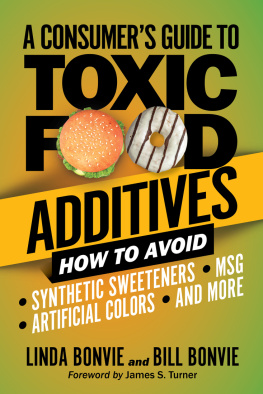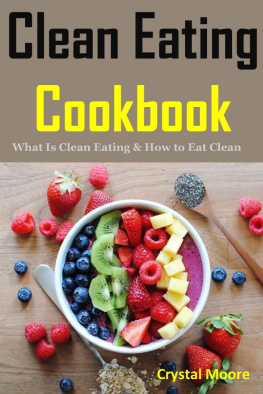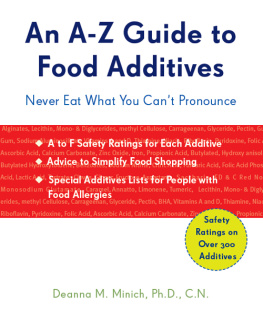1. The Twinkies ingredient list, like that of other processed foods, is not etched in stone. It varies over time and even from bakery to bakery as laws (i.e., trans fats are now banned) or prices or cooking techniques change, so dont freak out if your Twinkie box doesnt match the list used here.
10. The late 1800s was a period of newly improved commerce and communication, some sophisticated (railroads, newspapers, telegraph) and some not (snake oil and other creative traveling salesmen). This was fertile ground for the wild claims and major ad campaigns of early baking powdersClabber Girl and Davis, as well as Oetker and Krafts Calumet Baking Powder, all still alive and competing today, even if (curiously) Rumford, Clabber Girl, and Davis are now all made by the same companyincluding spurious assertions that competitors powders, among the first chemicals sold as convenience food, were made with poison. This led to the demand for honesty in packaging, which in turn led to the 1905 ingredient labeling laws that formed the basis for the labels we have todayand the inspiration for this book.
11. Several of the professionals I spoke with willingly tasted Twinkies, often for the first time since they were kids, and though they usually scoffed at their own diminished desire for such sweet things, they were impressed with Twinkies successful blend of flavors. One renowned flavorist, consultant to the biggest consumer food product companies in the world (who shall remain anonymous for obvious reasons) offered the following (technically and scientifically accurate) assessment upon a Twinkie tasting: Gee, thats great !
12. Candles, soaps, plastics, pastels, lubricants, and cosmetics (such as Vaseline Intensive Care Dry Skin Lotion) all claim stearic acid as an ingredient, there mostly to add slipperiness and bulk.
13. Small change is in the air, however, and domestic casein production might well begin again. The USDA has or had what appears to be a small, secret program to sell some surplus dried milk to several U.S. companies that can make caseinates, but has some kind of gag order and is not forthcoming with details.
14. Because Perkin extracted the aniline from coal tar, and because for years coal tar was the only source of benzene for dyes, they are still known as coal tar dyes despite the fact the most of them are made from oil and natural gas.
2. Some hydrogen is burnt with chlorine to make hydrochloric acid (HCl), an important part of a bunch of other food ingredient recipes.
3. Most of the professionals asked to name the vitamin manufacturers actually cite a company that has been defunct for several years, hardly a reassuring element in the food-processing picture.
4. Folic acid may even contribute to reduced stroke and heart disease.
5. In a way, flour is overshadowed by the sugar and sweeteners that follow it on the ingredient list. In the future, sugars may be broken down on the label by sucrose vs sweeteners, much as fats are now labeled. Sophisticated consumers will embrace that change and the cane sugar industry, which is always battling the corn sweetener industry, will love it.
6. Now American Sugar Refining Inc., of which Florida Crystals is part owner.
7. Almost half is grown from genetically modified (GM) seeds, created by companies like Monsanto to resist its Roundup herbicide; the trend, thanks in part to Monsantos strong marketing skills, indicates that there will be more GM corn in the future.
8. Most important, shortening has a much higher melting point than butter, more akin to lards, so it acts as a space holder to create air pockets in cakes or pie shells, making them tender and flaky.
9. This explains why beef fat showed up on more Twinkies ingredient labels in 2006 (it appeared less often before), and why the shortening is now called vegetable and/or animal shortening. Thats why Twinkies are no longer kosher, not that all of them were. Apparently only one or two of the various Hostess bakeries made kosher Twinkies, for what its worth. Kosher foods are often viewed by consumers who dont need to eat kosher foods as slightly better than nonkosher foods, even snack cakes, somewhat akin to the way all natural labels boost sales on things like ice cream.
Twinkie, Deconstructed
Twinkie, Deconstructed
My Journey to Discover How the Ingredients Found in Processed Foods Are Grown, Mined (Yes, Mined), and Manipulated into What America Eats
Steve Ettlinger

HUDSON STREET PRESS
Published by Penguin Group
Penguin Group (USA) Inc., 375 Hudson Street, New York, New York 10014, U.S.A. Penguin Group (Canada), 90 Eglinton Avenue East, Suite 700, Toronto, Ontario, Canada M4P 2Y3 (a division of Pearson Penguin Canada Inc.) Penguin Books Ltd., 80 Strand, London WC2R 0RL, England Penguin Ireland, 25 St. Stephens Green, Dublin 2, Ireland (a division of Penguin Books Ltd.) Penguin Group (Australia), 250 Camberwell Road, Camberwell, Victoria 3124, Australia (a division of Pearson Australia Group Pty. Ltd.) Penguin Books India Pvt. Ltd., 11 Community Centre, Panchsheel Park, New Delhi110 017, India Penguin Books (NZ), cnr Airborne and Rosedale Roads, Albany, Auckland 1310, New Zealand (a division of Pearson New Zealand Ltd.) Penguin Books (South Africa) (Pty.) Ltd., 24 Sturdee Avenue, Rosebank, Johannesburg 2196, South Africa
Penguin Books Ltd., Registered Offices: 80 Strand, London WC2R 0RL, England
First published by Hudson Street Press, a member of Penguin Group (USA) Inc.
Copyright Steve Ettlinger, 2007
All rights reserved
 | REGISTERED TRADEMARKMARCA REGISTRAD A |
LIBRARY OF CONGRESS CATALOGING-IN-PUBLICATION DATA
Ettlinger, Steve.
Twinkie, deconstructed: my journey to discover how the ingredients found in processed foods are grown, mined (yes, mined), and manipulated into what America eats / Steve Ettlinger.
p. cm.
ISBN 978-1-1012-1368-1
1. Food additives. 2. Processed foods. 3. Twinkies (Trademark) I. Title.
TX553.A3E85 2007
641.3'08dc22
2006030013
Without limiting the rights under copyright reserved above, no part of this publication may be reproduced, stored in or introduced into a retrieval system, or transmitted, in any form, or by any means (electronic, mechanical, photocopying, recording, or otherwise), without the prior written permission of both the copyright owner and the above publisher of this book.
PUBLISHERS NOTE
The scanning, uploading, and distribution of this book via the Internet or via any other means without the permission of the publisher is illegal and punishable by law. Please purchase only authorized electronic editions, and do not participate in or encourage electronic piracy of copyrighted materials. Your support of the authors rights is appreciated.
To Dylan and Chelsea
and
To those of us who have spent many a dull
moment staring, uncomprehending, at the
ingredient list on the label of some packaged
food (you have plenty of company).
Now you can read this book instead.
Tell me what you eat,
and I will tell you what you are.
Jean Anthelme Brillat-Savarin
The Physiology of Taste
ACKNOWLEDGMENTS
F irst and foremost, Im grateful to my children, Chelsea and Dylan, who served as inspiration for this book and who share my fascination with kitchen and consumer product science. (Kids, sorry for such a long answer.) Thanks beyond the norm go to my wife, Gusty, who encourages and knows creativity, drive, hard work, long hours, and passion. Thats what it takes. The emotional support of my family was backed up with practical sacrifices that made it all possible, to their credit. My mother applied her editorial skepticism, artfully blended with motherly encouragement, for which Im especially grateful. (In my world, family and work go together.)










